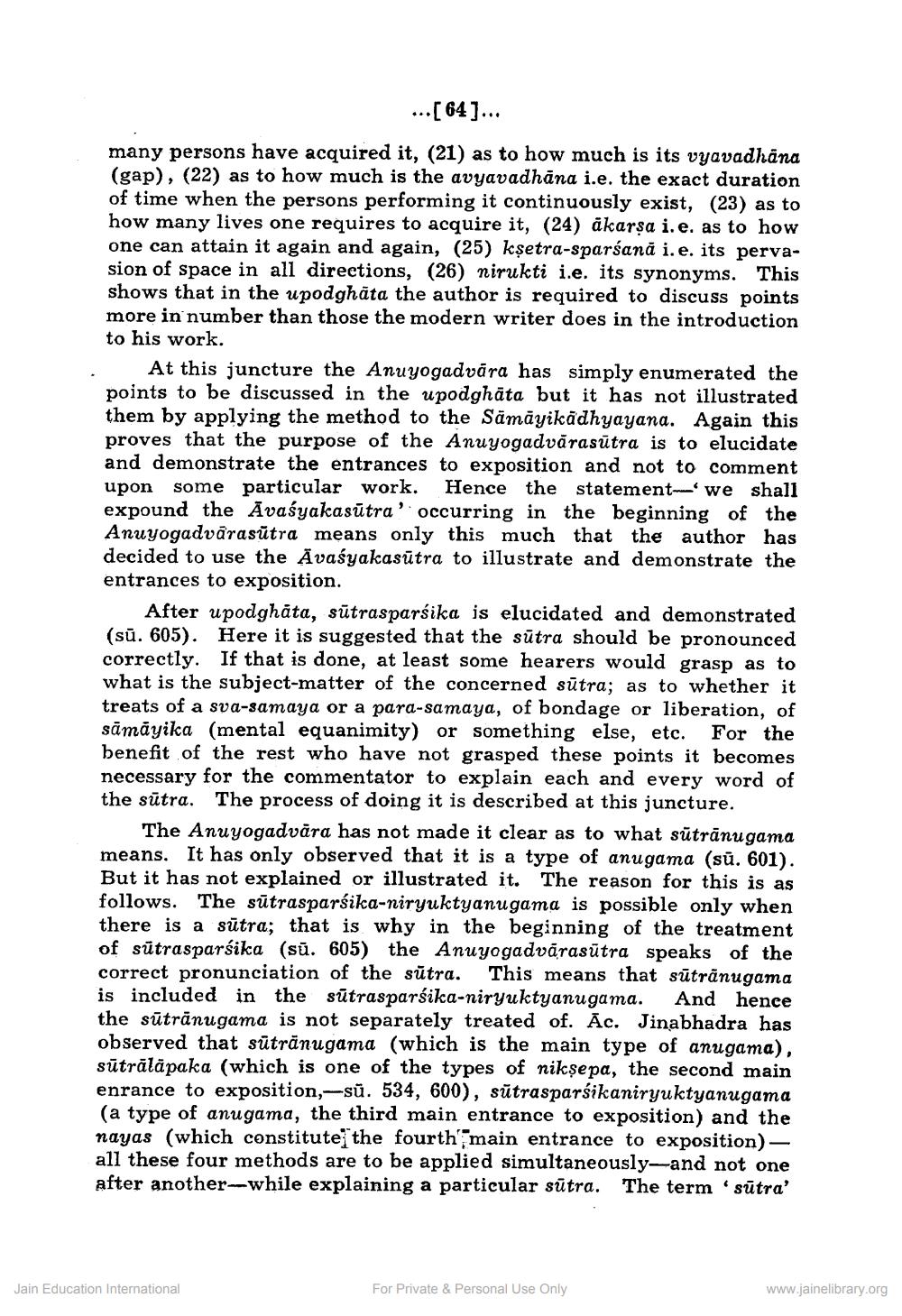________________
...[64]...
many persons have acquired it, (21) as to how much is its vyavadhana (gap), (22) as to how much is the avyavadhāna i.e. the exact duration of time when the persons performing it continuously exist, (23) as to how many lives one requires to acquire it, (24) akarsa i.e. as to how one can attain it again and again, (25) kşetra-sparśană i.e. its pervasion of space in all directions, (26) nirukti i.e. its synonyms. This shows that in the upodghāta the author is required to discuss points more in number than those the modern writer does in the introduction to his work.
At this juncture the Anuyogadvāra has simply enumerated the points to be discussed in the upodghāta but it has not illustrated them by applying the method to the Sāmāyikadhyayana. Again this proves that the purpose of the Anuyogadvārasūtra is to elucidate and demonstrate the entrances to exposition and not to comment upon some particular work. Hence the statement we shall expound the Avaśyakasūtra' occurring in the beginning of the Anuyogadvārasūtra means only this much that the author has decided to use the Avaśyakasūtra to illustrate and demonstrate the entrances to exposition.
After upodghata, sūtrasparsika is elucidated and demonstrated (sū. 605). Here it is suggested that the sūtra should be pronounced correctly. If that is done, at least some hearers would grasp as to what is the subject-matter of the concerned sūtra; as to whether it treats of a sva-samaya or a para-samaya, of bondage or liberation, of sāmāyika (mental equanimity) or something else, etc. For the benefit of the rest who have not grasped these points it becomes necessary for the commentator to explain each and every word of the sutra. The process of doing it is described at this juncture.
The Anuyogadvāra has not made it clear as to what sūtrānugama means. It has only observed that it is a type of anugama (sū. 601). But it has not explained or illustrated it. The reason for this is as follows. The sūtrasparsika-niryuktyanugama is possible only when there is a sūtra; that is why in the beginning of the treatment of sūtrasparsika (sū. 605) the Anuyogadvārasūtra speaks of the correct pronunciation of the sutra. This means that sūtranugama is included in the sūtrasparsika-niryuktyanugama. And hence the sūtrānugama is not separately treated of. Ac. Jinabhadra has observed that sūtrānugama (which is the main type of anugama), sūtrāläpaka (which is one of the types of niksepa, the second main enrance to exposition,-sū. 534, 600), sūtrasparšikaniryuktyanugama (a type of anugama, the third main entrance to exposition) and the nayas (which constitute the fourth main entrance to exposition) all these four methods are to be applied simultaneously--and not one after another--while explaining a particular sūtra. The term 'sūtra'
Jain Education International
For Private & Personal Use Only
www.jainelibrary.org




